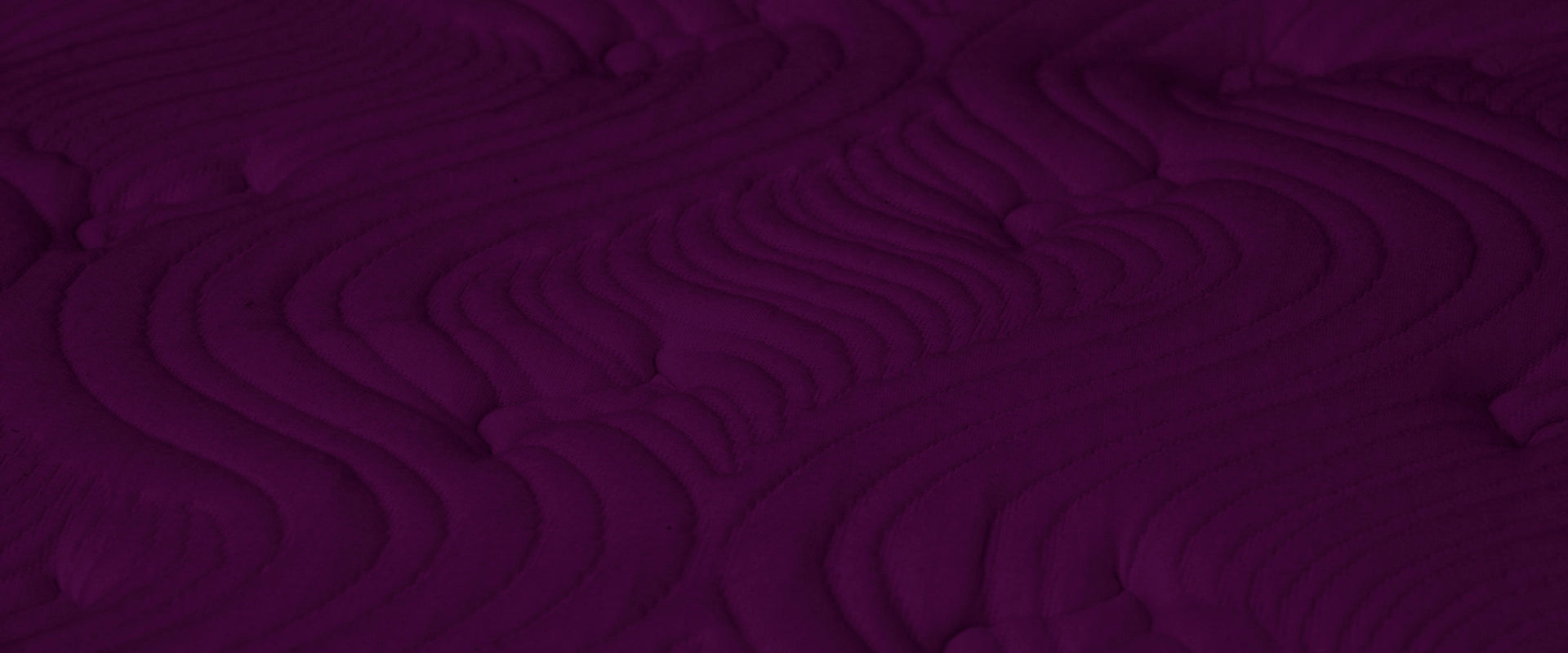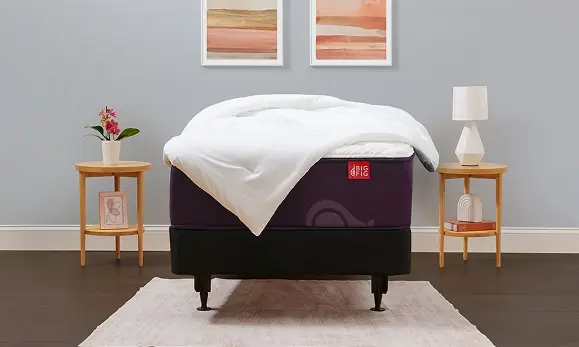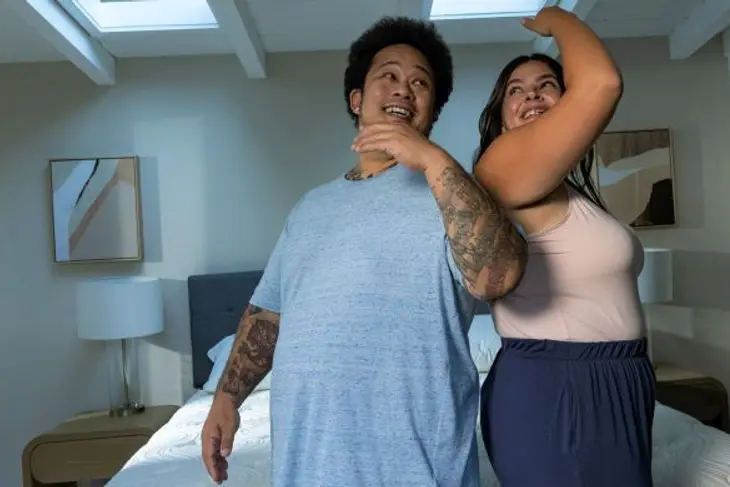Congratulations -- you've made the decision to purchase a Big Fig, a mattress designed specifically for your bigger-body needs! We couldn’t be more excited for you to finally experience the difference a quality mattress can make in your slumber. When you purchase a Big Fig, you’ll receive not just a mattress, but a high-quality, specially constructed sleep solution that's engineered to support your body and a heavy-duty foundation to ensure it performs to its full potential. Now the only thing left for you to do is to pick out quality sheets to match your incredible bed and full-figured needs. Allow us to help you figure out how to choose bed sheets for your Big Fig mattress so every sleep sesh is an incredible one.
How to Choose Bed Sheets
If you hop online and do a quick Google search for ‘bed sheets,’ you’ll quickly find yourself drowning in a sea of options. From cotton to satin and everything in between -- there’s a lot to choose from! And while some mattresses require specific bed sheets, Big Fig works with any standard sheet that can accommodate at least 14” in mattress height, which are available just about everywhere bed linens are sold.
So, which sheets are going to make you feel like you’re literally sleeping on a cloud, you ask? At the end of the day, it’s all about preference. But here are some common terms you should know to help you on your search:
Understand Bed Sheet Thread Count
This number that signifies how many vertical and horizontal threads a sheet has per square inch used to be king when it came to textile quality. Well, those days are long gone: Once manufacturers caught on to the power of thread count as a marketing tool, some, unfortunately, began to artificially inflate those numbers *sigh*.
These days, the thread count is just one of many considerations -- including the quality of the yarn and the type of weave. For optimal coolness and comfort that just hit differently, the sleep experts over at the National Sleep Foundation recommend a thread count between 200 and 400. (and yes, you really can be an expert in sleep—sign us up!)
Pro Tip: Too high a thread count, and the fabric won’t breathe as well, trapping body heat which can make for a hot and sweaty snooze -- no, thank you!
Compare Bed Sheet Material
Bed sheet material is the driving force behind the different kinds of sheets you can choose from. Let’s take a closer look at the most popular materials so you can make the best choice for you!
Long-Staple Cotton
Ah, cotton; the most common bed sheet material. Staple refers to the length of the cotton fiber. There are two main kinds of cotton: long-staple and short-staple. Longer fibers tend to make a stronger, smoother, and more durable fabric that is less prone to wrinkling and fraying. But, they are also much harder to grow, so they’re going to cost you a pretty hefty chunk of change.
Egyptian Cotton
Egyptian cotton is the longest staple cotton of the three main varieties (Pima and American Upland being the other two). It is grown exclusively in the Nile River Valley and processed according to specific stipulations. This extra-long-staple cotton has become synonymous with an oh-so-soft weave that sheds very little lint. Comfy? Check. Bougie? Double check, so expect to pay more for quality and the labor-intensive process to grow it. Also, keep in mind that even though its known for its softness, it’s less durable than other forms of cotton—especially if not taken care of properly.
Pima Cotton
Another popular long-staple cotton is Pima cotton. Grown in parts of the southwestern U.S., Peru, and Australia, Pima cotton yields a deliciously soft fabric with thread counts in the low 200-300 range. “Supima” is commonly found on the labels of Pima sheets as a trademark of the Supima Association. While they are known for their softness and durability, it’s still a natural fiber that’s susceptible to wear and tear over time. It’s also more expensive than regular cotton due to the cost of production and takes more time and effort to take care of in order to maintain softness and prevent shrinking.
Organic Cotton
Organic cotton is exactly how it sounds—organic. Grown without the use of icky pesticides and made without any synthetic pigments or allergens, this type of cotton can be especially helpful if you have allergies to chemicals and dyes. Many people also like purchasing organic because it means they are supporting more sustainable agriculture -- and we’re all about making the planet a better place! Slide right into those clean sheets, guilt free.
What is Bed Sheet Weave?
Bed Sheet wave describes the appearance of the fabric when it's wrinkled or crumpled. After you make a bed or when a sheet is not perfectly smooth, it can have a wave-like appearance due to wrinkles or folds. These "waves" are just the natural result of the fabric not lying completely flat. Bed sheets can show wave-like patterns depending on the type of fabric and how it's handled. For instance, if a sheet is not evenly spread or has been washed and dried in a way that causes uneven shrinkage or stretching, it can create a wavy effect.
Bed Sheet wave is determined by how the threads are stitched together; weave determines quite a bit about bedsheets: the feel of the fabric, how it looks, how well it stands up to washing, and even how much it costs. In bedding, sateen and percale are the two most common weaves.
Sateen
Sateen fabric, a type of weave that offers unparalleled comfort, is commonly crafted from high-quality cotton. Its unique feature is a glossy surface and smooth texture, achieved through a meticulous weaving process. Post-weaving, sateen fabric undergoes various finishing treatments, enhancing its sheen and softness. Its smooth surface drapes beautifully, adding a subtle sheen that epitomizes comfort. It’s perfect for those who seek a pampering bed setup, these sheets will make you feel like royalty every time you slip into bed.
Generally, they can be more expensive than basic cotton sheets because sateen is often made from higher-quality cotton and has a luxurious, smooth finish.
Percale
A percale is a weave where the weft (horizontal) and the warp (vertical) threads cross over each other in an alternating pattern. It’s asimple yet tight weave that provides a fine, crisp feeling against the skin. Percale sheets have a very low thread count (in the 100s) and typically have a coarser texture. While that may not sound super appealing from the get-go, we promise that a coarser texture doesn’t mean that you’ll be itchy all night. Rather, you’ll get a cool, airy night of rest. Percale is also durable, doesn’t wrinkle as much as other materials, and is typically on the more affordable side.
Types of Bed Sheet Finishes
Some sheets are treated with chemicals like silicon and chlorine to prevent fading, shrinking, and wrinkling, while others are organic or finish-free. Finishing can make your sheets a little stiff at the start, but after a few washes they should be nice and soft. Let’s get more specific, shall we?
Wrinkle-Resistant
While the chemicals used to reduce wrinkling make maintenance easier, this finish can sometimes affect the fabric’s feel, making it less soft.
Stain-Resistant
It is coated to resist spills and stains. While that may be useful, it can also impact the fabric’s breathability, which can make for uncomfortable, sweaty sleep.
Brushed
When fabric is brushed (often with flannel or microfiber), it becomes softer and increases warmth.
Mercerized
A treatment that strengthens cotton fibers, making them shinier and more durable. It also helps the fabric absorb dyes better.
Sanforized
A pre-shrinking process that prevents further shrinking after washing.
Peached
A finish that creates a soft, velvety texture by lightly sanding the fabric's surface.
What Type Of Sheets Are Best?
For Hot Sleepers
If you’re a hot sleeper, opt for breathable fabrics like cotton, linen, or bamboo to help wick away moisture and promote airflow. Lower thread counts (200-400) are usually more breathable.
For Cold Sleepers
In colder months (or climates),consider flannel or higher-thread-count cotton (400-800) for added warmth. Time to get cozy!
For Allergy Sufferers
Hypoallergenic fabric options, like organic cotton, bamboo, or silk, are grown without synthetic pesticides or fertilizers, making them less likely to cause allergic reactions. They’re also good options for those with sensitive skin. Choose tighter weaves to prevent dust mites and other allergens from accumulating.
For Low Maintenance
If you prefer a low-maintenance approach, microfiber or easy-care cotton blends are the ideal choice. These materials resist wrinkles and are generally easier to care for, making your bedding routine stress-free. For added convenience, choose machine-washable and quick-drying sheets.
For Luxury Seekers:
On the flip side, if you seek a truly luxurious sleeping experience, high-quality materials such as Egyptian cotton, silk, or high-thread-count sateen can provide a level of comfort and indulgence that is unmatched. With thread counts of 600 and above, these materials elevate your sleeping experience to a regal level.
Time to Make Your Big Fig Mattress
So, how does one choose the right type of sheets for their Big Fig mattress, you ask?
Well, the truth is that the answer to this question isn’t that simple because everyone has different tastes and preferences. So, if you’re not sure where to start on your sheet-buying journey, we suggest starting with good ol’ cotton because it’s breathable, moisture-wicking, and works beautifully on all Big Figs. Just be sure to get one that can accommodate at least 14” in the correct size: twin, twin XL, full, queen, king, or cal king.
Once you’ve made your Big Fig with your new linen -- you are ready to snooze. Happy dreaming!






